Geometry Worksheets for Ages 3-9
201 filtered results
-
From - To
Welcome to our Geometry Worksheets for Ages 3-9! Designed to introduce young learners to the fundamentals of shapes, angles, and spatial reasoning, these engaging worksheets support early math skills. Children will explore concepts through fun, engaging activities such as coloring, matching, and tracing. With our variety of printable resources, kids will enjoy hands-on learning experiences that make geometry accessible and enjoyable. Whether at home or in the classroom, these worksheets provide a valuable tool for teachers and parents alike, fostering a solid foundation in geometry that boosts confidence and curiosity. Start your child's geometric journey today!
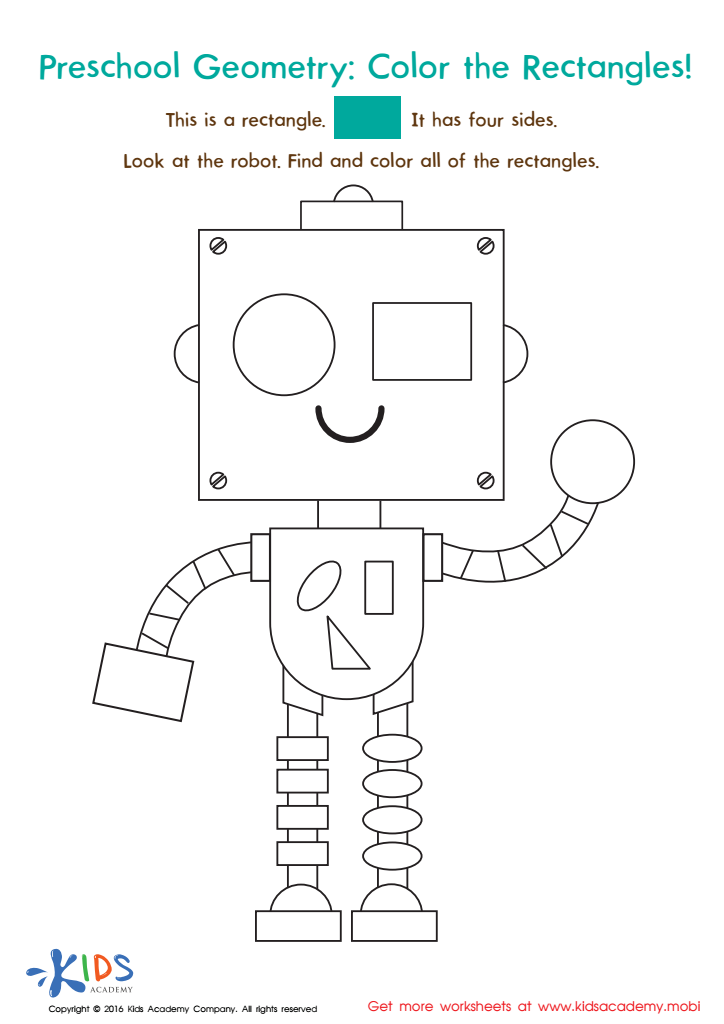

Geometry Worksheet
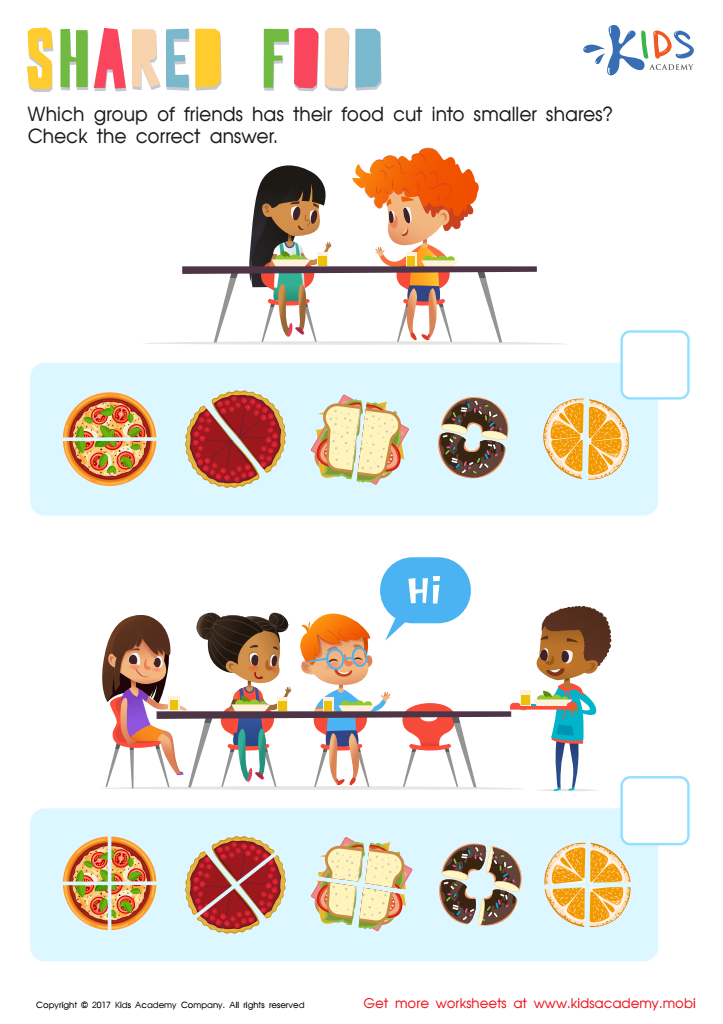

Shared Food Worksheet
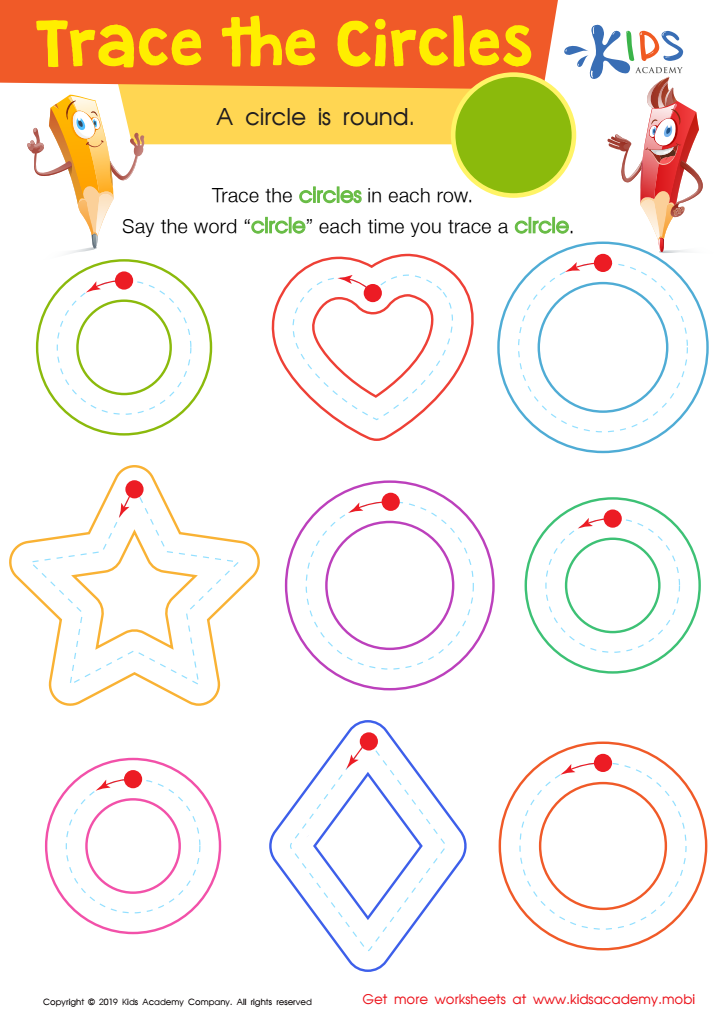

Trace The Circles Worksheet


Let's Count Faces! Worksheet
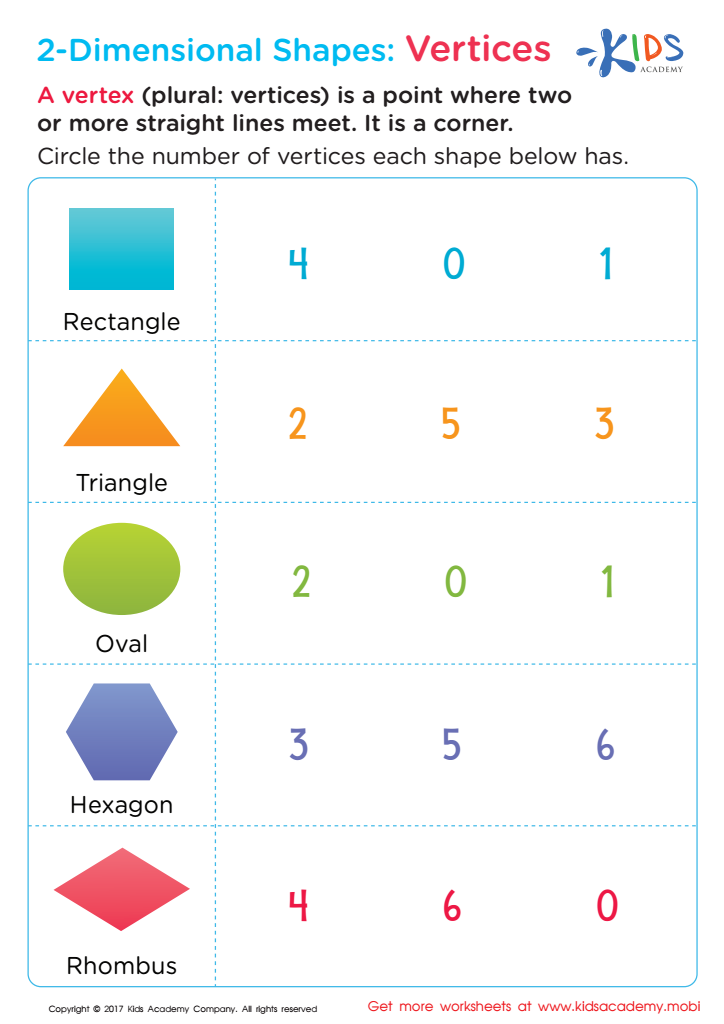

Two–Dimensional Shapes: Vertices Printable
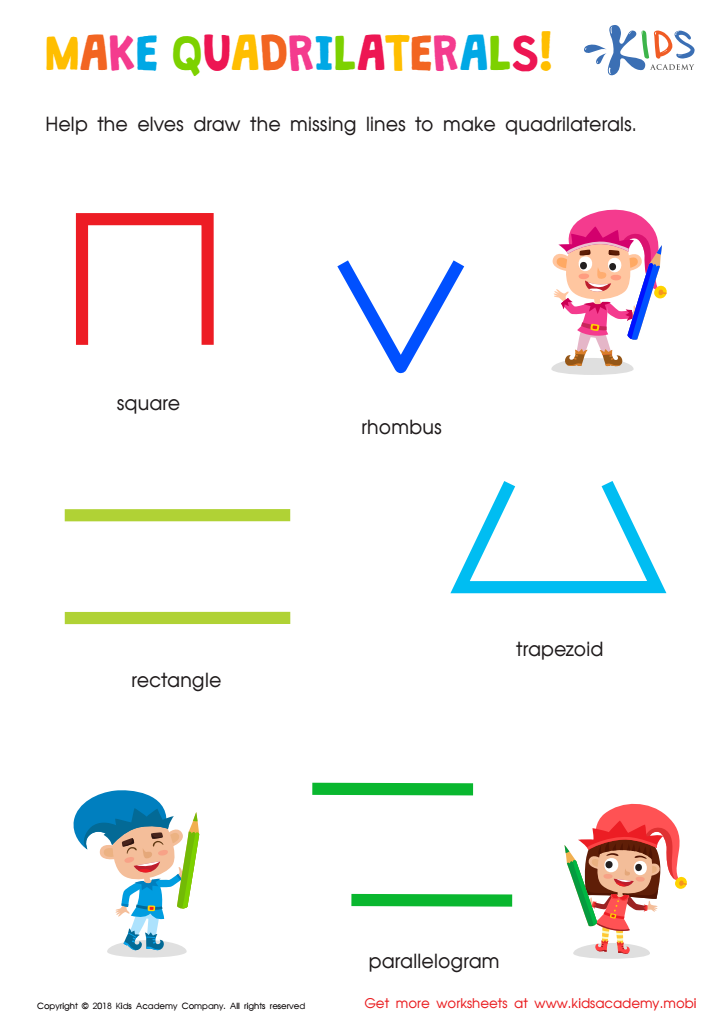

Make Quadrilaterals Worksheet
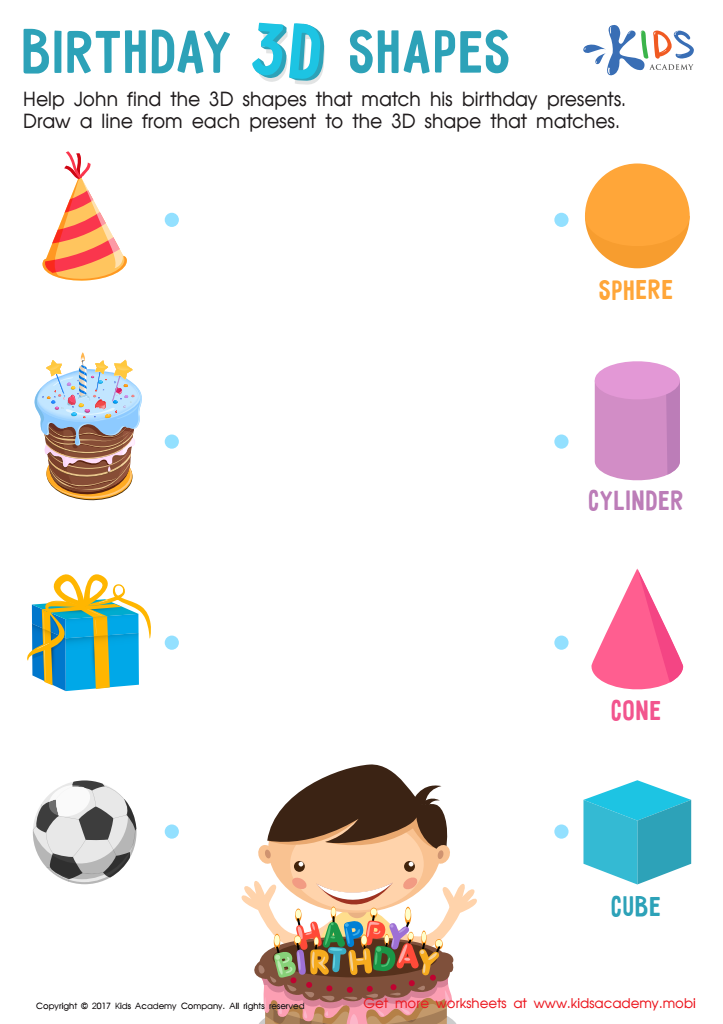

Birthday 3D Shapes Worksheet
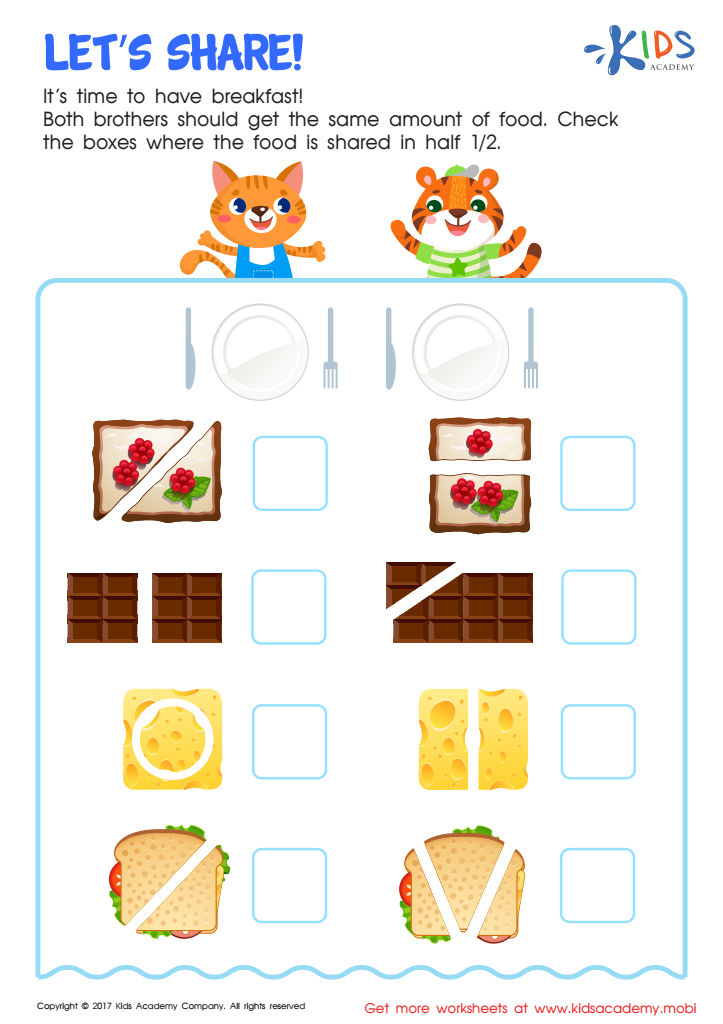

Let's Share Worksheet


Identify Quadrilaterals Worksheet
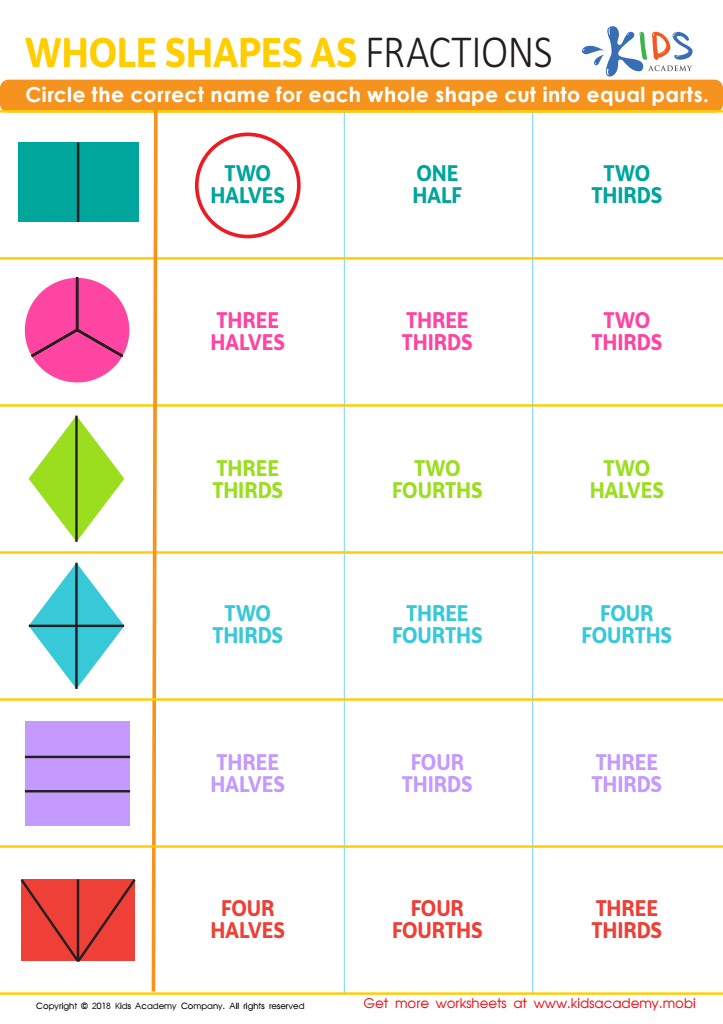

Whole Shapes as Fractions Worksheet


Matching and Sorting for Kindergarten: Assessment 3 Worksheet
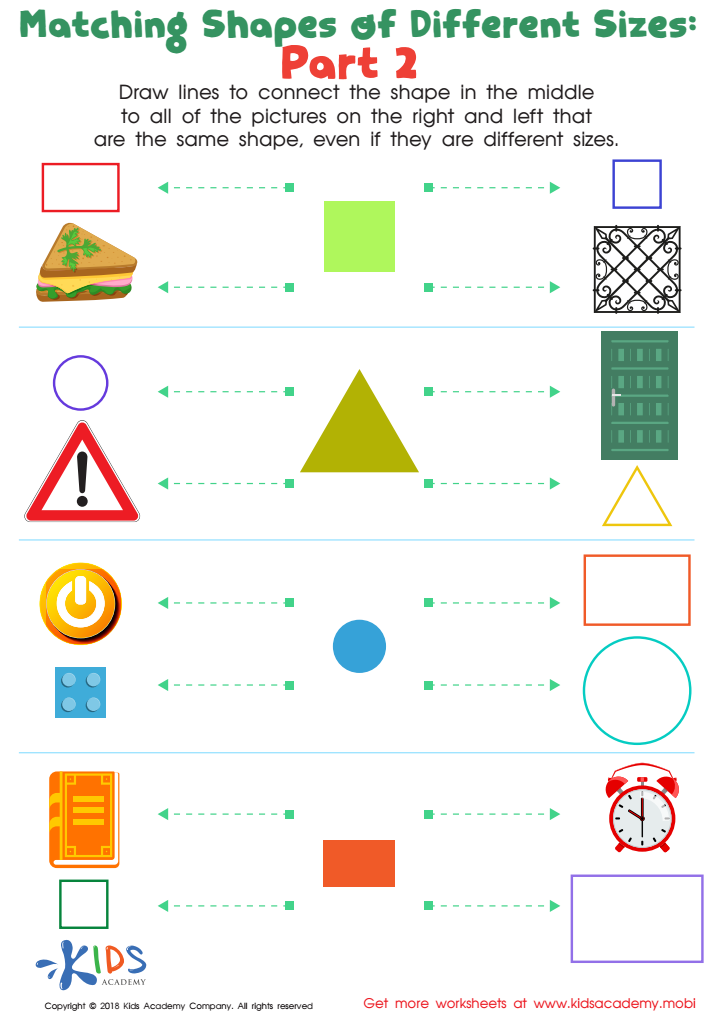

Geometry: Part 2 Worksheet
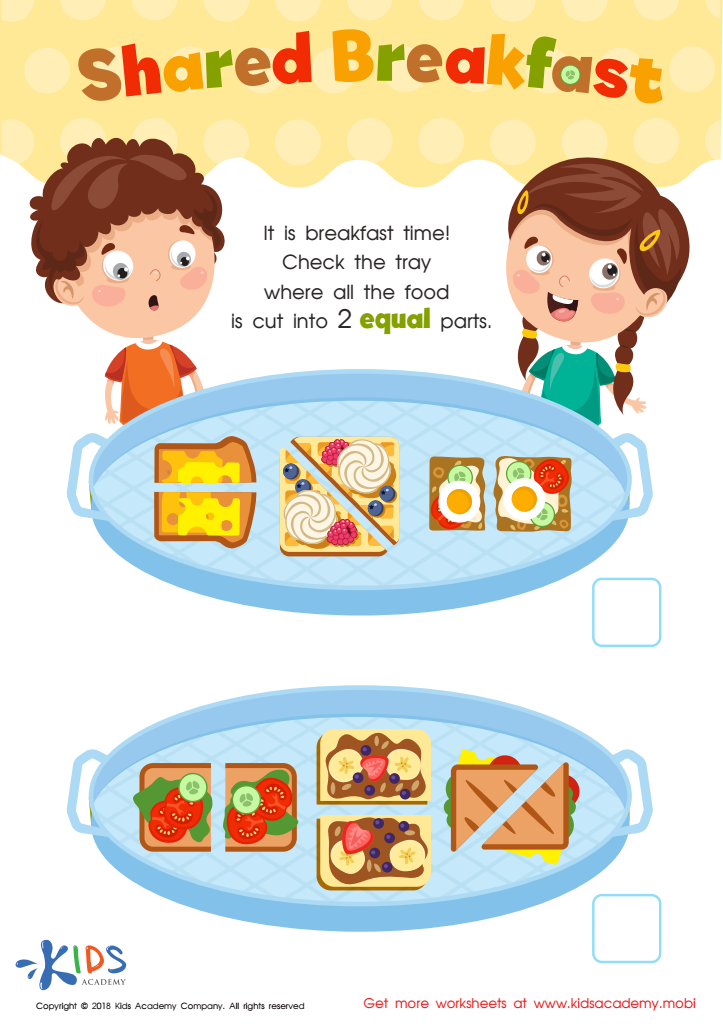

Shared Breakfast Worksheet
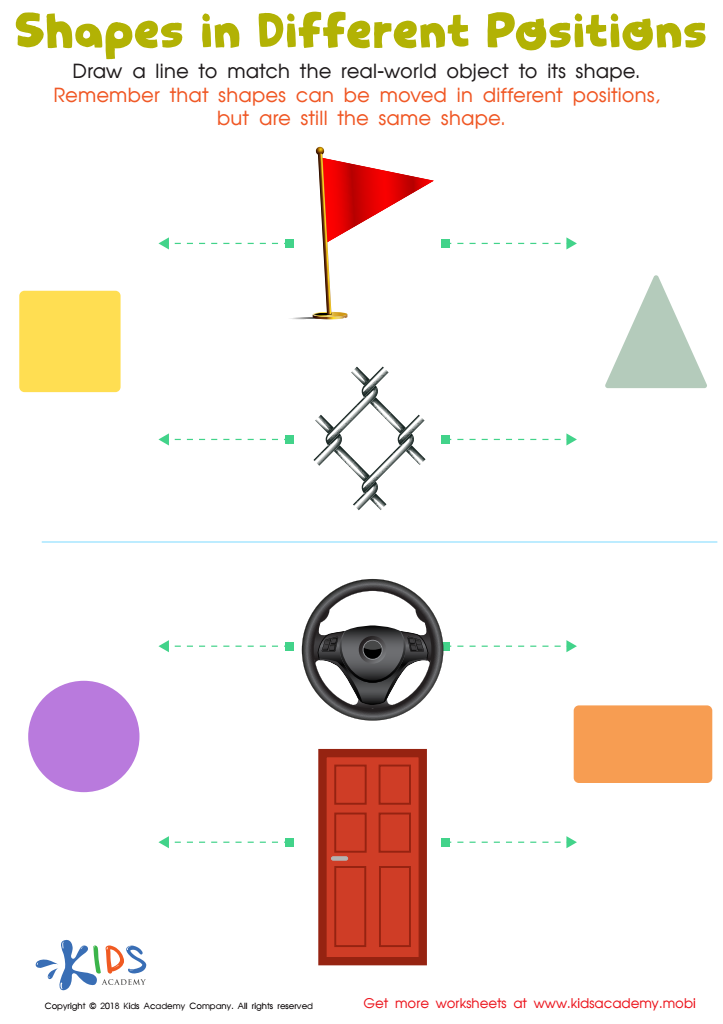

Shapes in Different Positions Worksheet
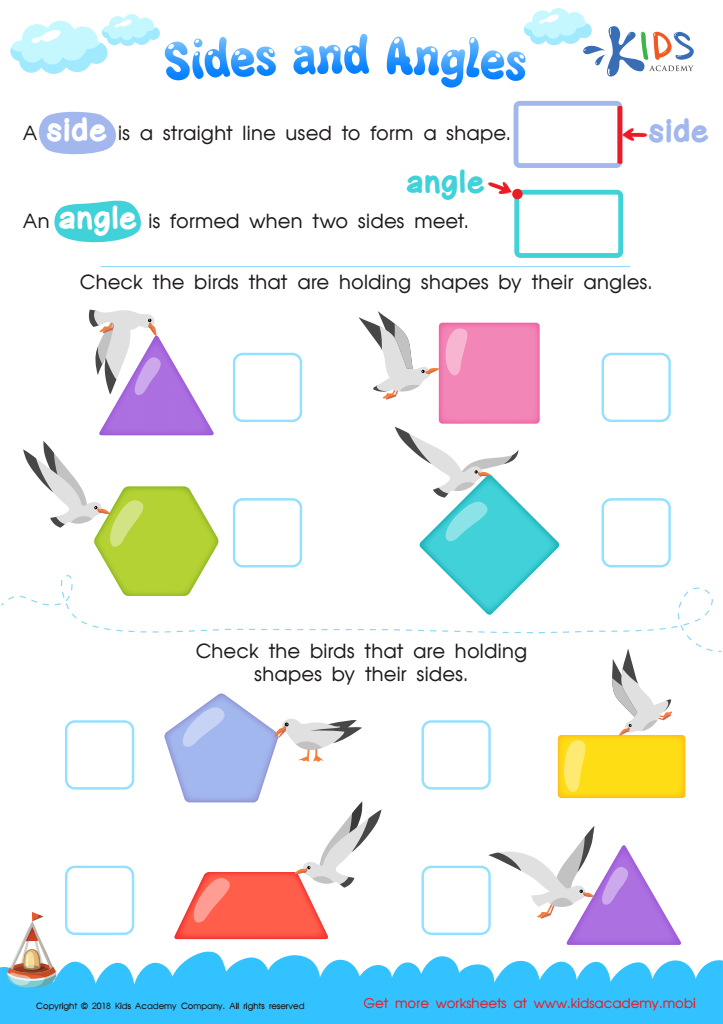

Sides and Angles Worksheet
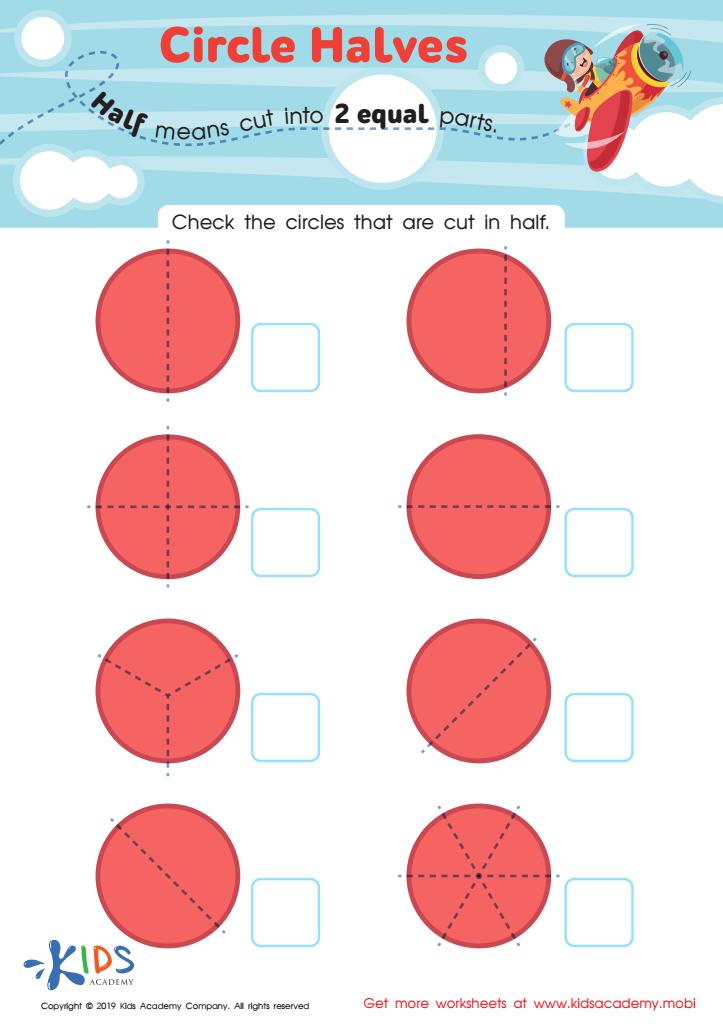

Circle Halves Worksheet
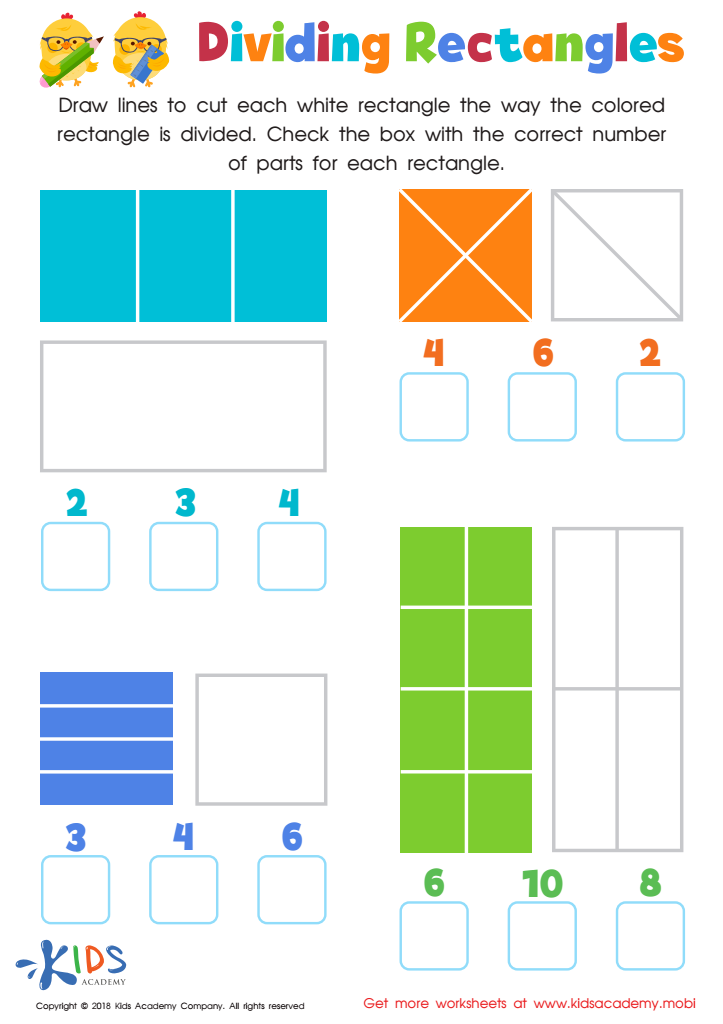

Dividing Rectangles Worksheet


Cone Hide-and-Seek Worksheet
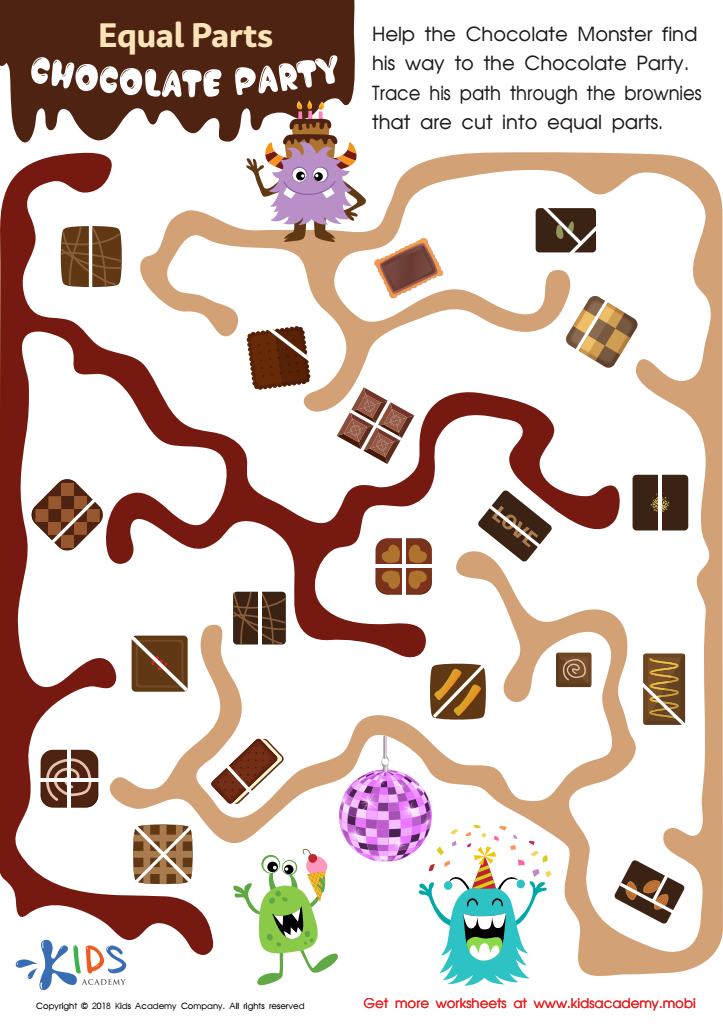

Equal Parts: Chocolate Party Worksheet
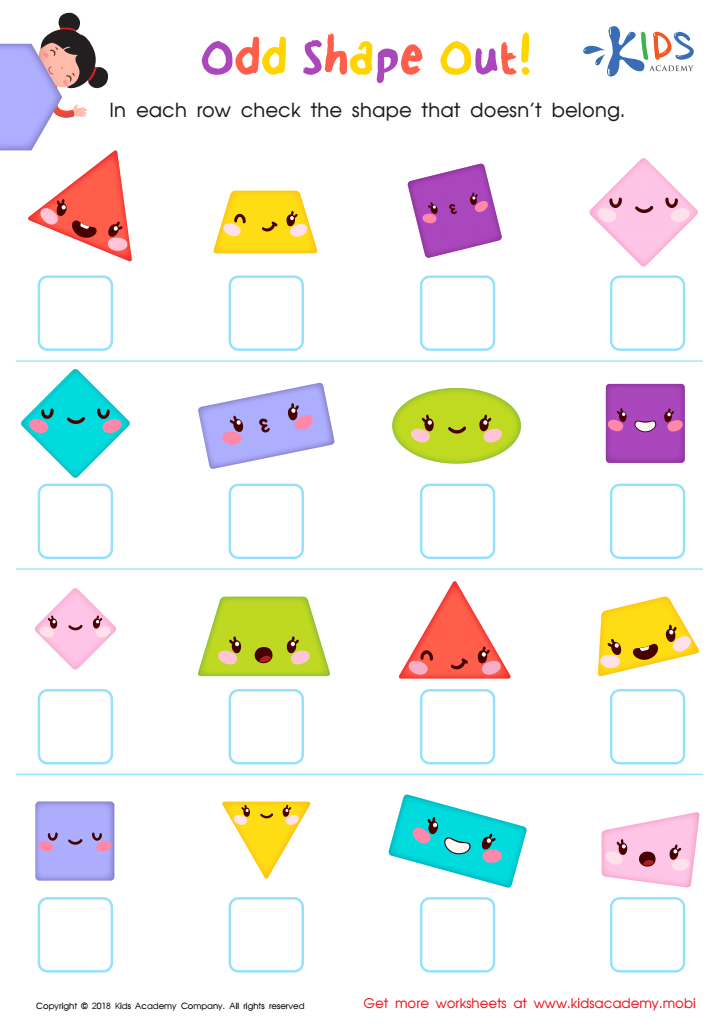

Odd Shape Out Worksheet for Grade 3
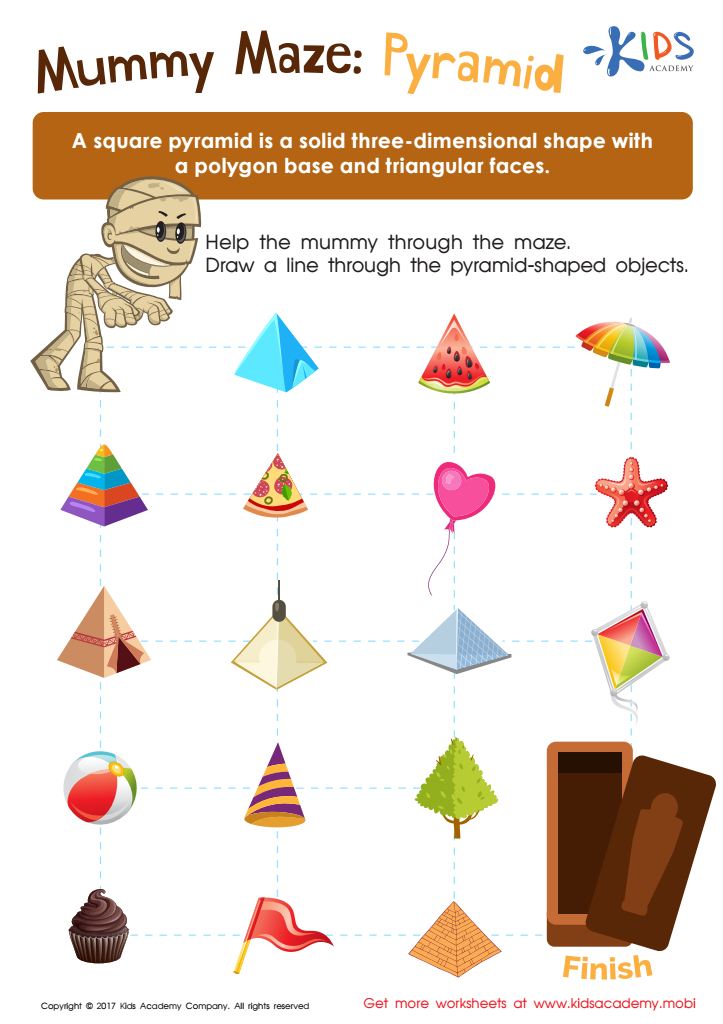

Mummy Maze: Pyramid Printable


Halves and Wholes on the Clock Worksheet
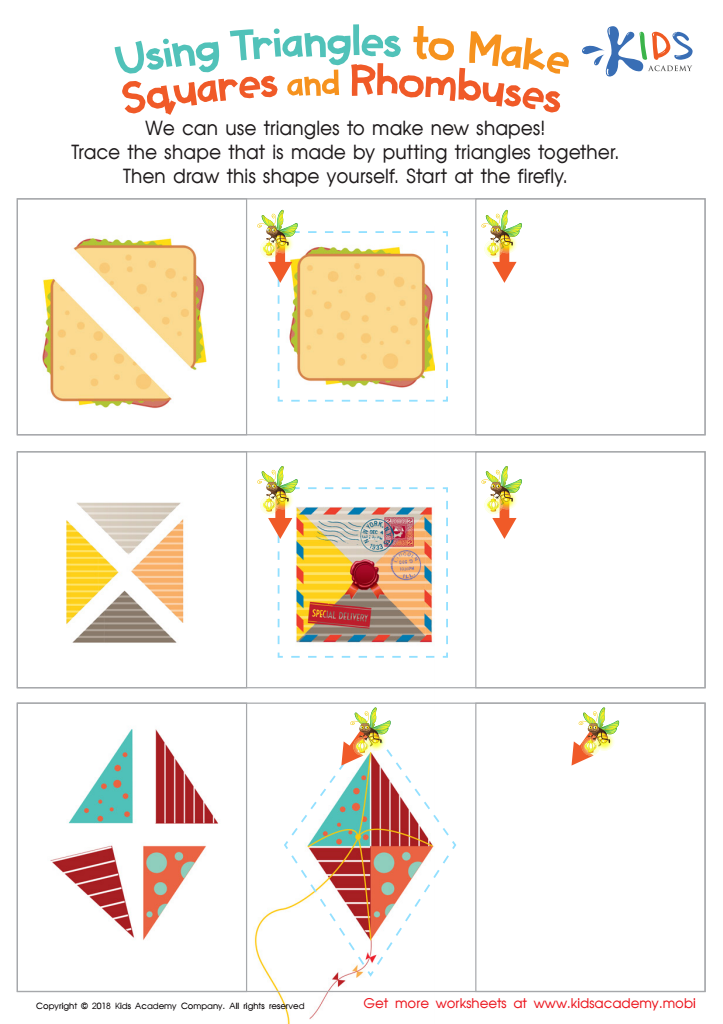

Using Triangles to Make Squares and Rhombuses Worksheet
Geometry plays a crucial role in the cognitive development of children aged 3 to 9, and both parents and teachers should prioritize its teaching for several reasons. First, geometric concepts enhance spatial reasoning, which is essential for critical thinking and problem-solving. Children begin to understand shapes, sizes, and spatial relationships during these formative years, which lays the groundwork for future math skills.
Moreover, geometry supports language development. Describing shapes and exploring their properties encourages children to use and expand their vocabulary, fostering communication skills. Engaging in geometric play also aids fine motor development, as children manipulate objects, draw shapes, and solve puzzles.
Additionally, geometry is woven into everyday life. Understanding basic shapes and their characteristics helps children navigate their environment, enhancing their ability to observe and make sense of the world around them. This foundational knowledge is not just academic; it paves the way for competencies in science, engineering, technology, and art.
Lastly, introducing geometric concepts early can ignite a lifelong passion for learning. Engaging activities, such as shape sorting games or building with blocks, make geometry fun while ensuring children appreciate the beauty of mathematics and its applications. Therefore, a strong emphasis on geometric learning fosters well-rounded, capable learners.
 Assign to My Students
Assign to My Students





















